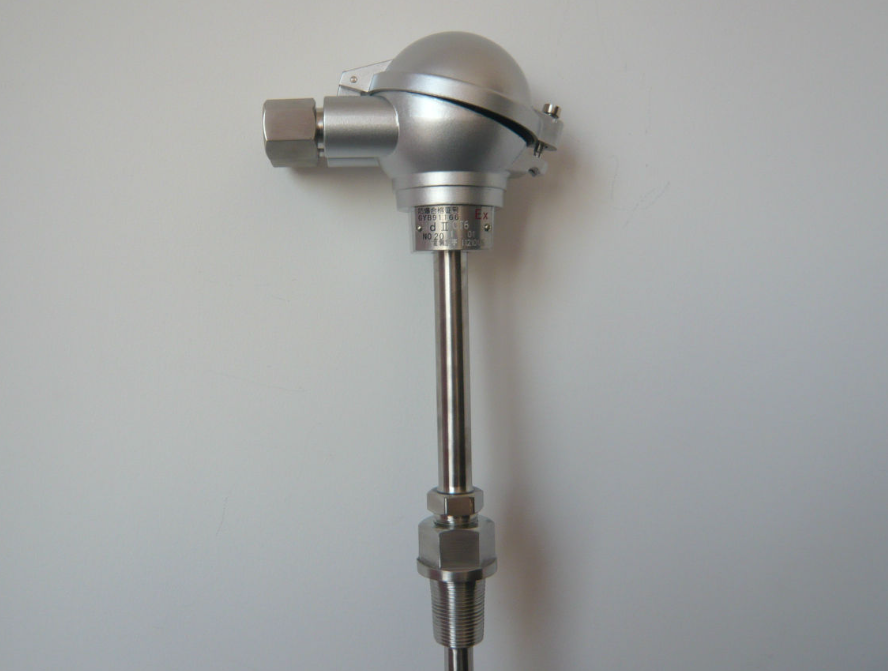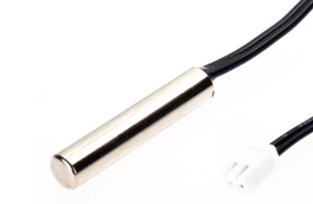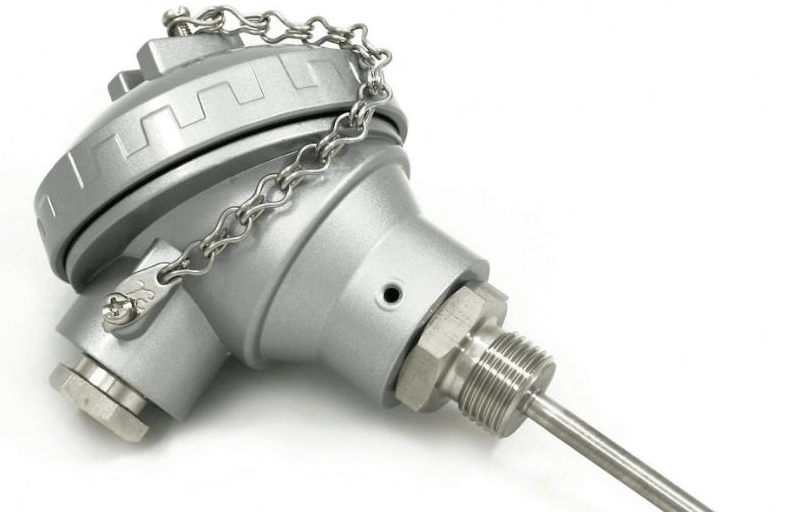Powerful Protection from Payment to Delivery
Secure and Reliable Payment
Money Back Guarantee
Shipping and Delivery
After-Sales Service
Enter the order reference number received by email to check the status or make payment.
Top 4 Temperature Sensors Overview
A temperature sensor is a measuring instrument that converts thermal quantity into physical quantity using various physical properties of a substance. These physical properties include expansion, resistance, capacitance, electromotive force, magnetic properties, frequency, optical characteristics, and thermal noise. Due to many materials and components changing with temperature, there are quite a few materials that can be used as temperature sensors. Let me introduce you to four common types of temperature sensors in detail.
Temperature Sensor Types Overview
There are various types of temperature sensors available, categorized as either contact or non-contact type based on their measurement method. Additionally, they can be classified based on the characteristics of the sensor materials and electronic components as thermistors and thermocouples.
Contact temperature sensors require direct thermal contact with the medium being measured to facilitate sufficient heat exchange and reach the same temperature. This category includes resistance-type sensors, thermocouples, PN junction temperature sensors, and more. On the other hand, non-contact temperature sensors don't require direct contact with the medium being measured, but instead measure temperature through the medium's heat radiation or convection.
Four commonly used temperature sensors are thermocouples, thermistors, Resistance Temperature Detectors (RTDs), and IC Sensors. Each of these sensors has its own unique characteristics and applications.
What is Thermocouple?
Thermocouples are widely used for temperature measurement due to their adaptability to various atmospheric environments, wide temperature range, and affordability. They consist of two different metal wires connected at one end, and when one end is heated, an electric potential difference is generated in the thermocouple circuit, which can be used to calculate the temperature.
The thermocouple sensor has two contacts - the measurement end and the reference junction. The mV signal generated by the temperature difference between the two ends is proportional to the temperature difference, and the mV value increases with increasing temperature. However, the relationship between mV and temperature is non-linear.
The thermocouple connector can be grounded or ungrounded, and it is important to isolate the measurement circuit to prevent the formation of ground loops and avoid measurement errors. The thermocouple is usually embedded in magnesium oxide and a metal sheath, then inserted into a thermowell or protective tube to protect it from environmental pollution.
To obtain the thermocouple temperature, a second measurement for the reference temperature (Tref) is necessary, and the voltage-temperature conversion is processed inside the instrument using test equipment software or hardware. However, the sensitivity of thermocouples is relatively low, making them susceptible to environmental interference signals and temperature drift of the preamplifier, which makes them unsuitable for high-accuracy measurement and application.
In actual use, the thermocouple measuring circuit can measure any temperature except 0°C, and the cold junction compensation is necessary to restore the temperature to 0°C. If a higher-grade thermocouple is required, it is recommended to use high-quality wire for higher stability, as the cost difference is small.

What is Thermistor Sensor?
The thermistor sensor is primarily composed of a thermistor, which absorbs heat radiation from its surroundings. Thermistors are typically made of semiconductor materials, with a negative temperature coefficient, meaning that their resistance decreases as the temperature increases. Due to this characteristic, thermistors are highly sensitive temperature sensors. However, their linearity is often poor, and their standardized curve cannot be easily determined due to the effects of the production process.
Despite these limitations, thermistors are highly responsive to temperature changes and are very compact. However, they require a current source, and their small size makes them susceptible to self-heating errors. Thermistors are more accurate than thermocouples, but they are also more expensive and have a narrower measurable temperature range.
A typical thermistor has a resistance value of 5kΩ at 25°C, and a temperature change of 1°C causes a resistance change of 200Ω. While the lead resistance of 10Ω only causes a negligible error of 0.05°C, care must be taken to prevent self-heating errors. Thermistors are ideal for applications that require fast and sensitive temperature measurement, and their small size makes them suitable for space-constrained environments.
However, it's important to keep in mind some measurement tips when using thermistors. While they are quick to stabilize and do not cause thermal load, they are not strong enough to handle large currents and can be damaged by exposure to high heat. Since thermistors are resistive devices, any current source will generate heat due to power, and a small current source must be used to prevent self-heating. Overall, thermistors are a reliable and sensitive temperature sensor, but their limitations must be taken into account when selecting them for specific applications.

What is Resistance Temperature Detector (RTD)?
RTD, or resistance temperature detector, is a type of temperature sensor known for its high precision and stability. It is made of high-purity conductive metal or alloy, such as platinum, copper, or nickel. Similar to a thermistor, its resistance increases with increasing temperature and decreases with decreasing temperature.
RTD works by converting temperature changes into voltage changes, much like a thermoelectric converter. By passing a constant temperature current through the sensor, an output voltage that increases linearly with temperature can be obtained. The most suitable metal for RTD is a pure metal that remains stable within a given temperature range. Ideally, the resistance-temperature change relationship should be linear, and the temperature coefficient should be large. Additionally, it should be able to resist thermal fatigue and respond sensitively to temperature changes.
A typical RTD consists of a protective sleeve and a probe. The protective sleeve is made of materials such as stainless steel, carbon steel, inconel, or cast iron, and is used to protect the RTD from damage caused by the measured medium. Its use temperature can reach up to 1100°C.
Compared to thermocouples and thermistors, RTDs are the most accurate and stable sensors with better linearity. However, they have a slower response speed and are more expensive. Therefore, they are most suitable for applications that require high accuracy, where speed and price are not critical.

What is IC Sensor?
IC sensors are widely used in a variety of applications due to their ability to operate in a wide range of temperatures. The temperature range for these sensors can vary from -55°C to +200°C, depending on the sensor's precision. They are commonly used in fitness trackers, wearable products, computing systems, data loggers, and automotive applications.
There are several types of integrated IC temperature sensors available, such as analog output devices, digital interface devices, remote temperature sensors, and those integrated ICs with thermostat functions. Analog output devices typically require an ADC to process the output signal, while digital interface devices use a two-wire interface (I2C or PMBus) and have a built-in ADC. Remote temperature sensors have one or more inputs to monitor the remote diode temperature, and they are most often placed in highly integrated digital ICs, such as processors or field programmable gate arrays (FPGA). Thermostat functions are also available in some integrated ICs, which can provide a simple alarm when a certain temperature threshold is reached.
One of the most common types of integrated IC temperature sensors is the analog output temperature sensor. This sensor is made using silicon semiconductor integration process and integrates a temperature sensor on a chip to take temperature measurements and output analog signals. The main features of this sensor are its single function, small temperature measurement error, low price, fast response speed, long transmission distance, small size, and micro power consumption. Non-linear calibration is not required, and the peripheral circuit is simple, making it suitable for long-distance temperature measurement, control, and measurement.
Another common type of integrated IC temperature sensor is the digital output sensor. This sensor is the product of microelectronics technology, computer technology, and automatic test technology (ATE). The intelligent temperature sensor contains a temperature sensor, A/D converter, signal processor, memory (or register), and interface circuit. Some products also come with multiplexers, central controllers, random access memory, and read-only memory. The intelligent temperature sensor can output temperature data and related temperature control quantities, adapting to various microcontrollers (MCU). It realizes the test function through software on the basis of hardware, and its level of intelligence depends on the level of software development.
Recent Posts








Company
About UsContact UsTerms & ConditionsPrivacy StatementPayment,Shipping & InvoiceRefund & Return PolicyWarranty PolicyFrequently asked questionHolidays for Chinese Mid-Autumn Festival and National Day in 2023


















